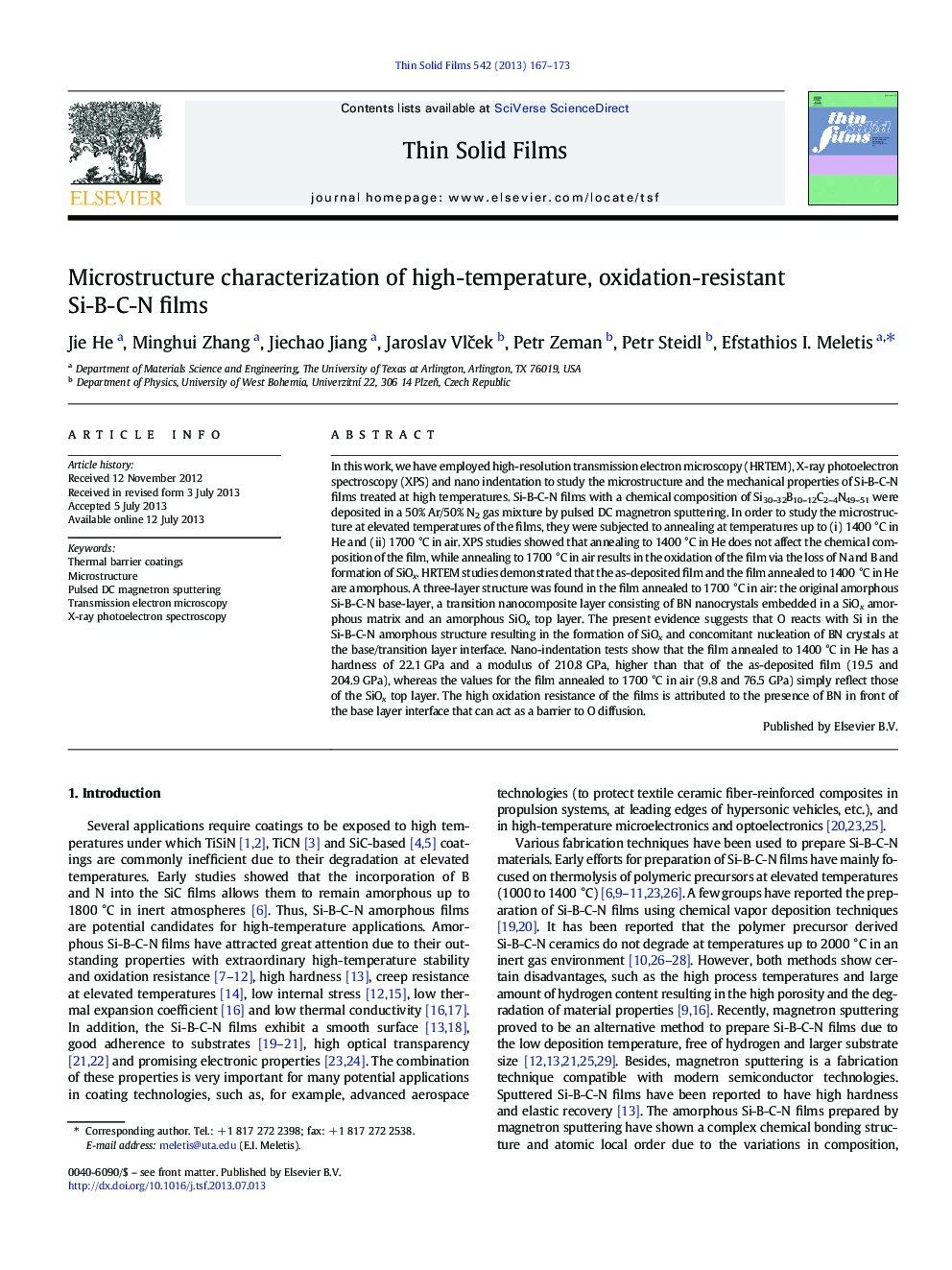| Article ID | Journal | Published Year | Pages | File Type |
|---|---|---|---|---|
| 8036470 | Thin Solid Films | 2013 | 7 Pages |
Abstract
In this work, we have employed high-resolution transmission electron microscopy (HRTEM), X-ray photoelectron spectroscopy (XPS) and nano indentation to study the microstructure and the mechanical properties of Si-B-C-N films treated at high temperatures. Si-B-C-N films with a chemical composition of Si30-32B10-12C2-4N49-51 were deposited in a 50% Ar/50% N2 gas mixture by pulsed DC magnetron sputtering. In order to study the microstructure at elevated temperatures of the films, they were subjected to annealing at temperatures up to (i) 1400 °C in He and (ii) 1700 °C in air. XPS studies showed that annealing to 1400 °C in He does not affect the chemical composition of the film, while annealing to 1700 °C in air results in the oxidation of the film via the loss of N and B and formation of SiOx. HRTEM studies demonstrated that the as-deposited film and the film annealed to 1400 °C in He are amorphous. A three-layer structure was found in the film annealed to 1700 °C in air: the original amorphous Si-B-C-N base-layer, a transition nanocomposite layer consisting of BN nanocrystals embedded in a SiOx amorphous matrix and an amorphous SiOx top layer. The present evidence suggests that O reacts with Si in the Si-B-C-N amorphous structure resulting in the formation of SiOx and concomitant nucleation of BN crystals at the base/transition layer interface. Nano-indentation tests show that the film annealed to 1400 °C in He has a hardness of 22.1 GPa and a modulus of 210.8 GPa, higher than that of the as-deposited film (19.5 and 204.9 GPa), whereas the values for the film annealed to 1700 °C in air (9.8 and 76.5 GPa) simply reflect those of the SiOx top layer. The high oxidation resistance of the films is attributed to the presence of BN in front of the base layer interface that can act as a barrier to O diffusion.
Keywords
Related Topics
Physical Sciences and Engineering
Materials Science
Nanotechnology
Authors
Jie He, Minghui Zhang, Jiechao Jiang, Jaroslav VlÄek, Petr Zeman, Petr Steidl, Efstathios I. Meletis,
